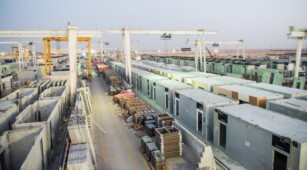
It was a 21-year-old student who originally made headlines with modular construction. Building on his university thesis, Moshe Safdie built Habitat as the Canadian Pavilion for the Montreal World Exposition of 1967. Today, while his creation still stands as an architectural marvel, modular construction is still to attain main stream success.
The modular concept allows for quicker project execution; hence, lower cost and earlier to market. Coupled within a controlled and safe construction environment, it results in a tangible positive return on investment (ROI) compared with on-site construction. Operational efficiencies include central oversight, 24x7 factory operation, health and safety standards making it the ideal solution for designers, developers and engineers. Why then has it not seen wider adoption?
A key reason is the limitations around logistics, shapes and sizes. In ground-up development, designers and developers like to get creative. The real advantage of modular has been replicating a “pod” over and over again. It is easier to construct boxes upon boxes of these pods in a factory setting, than on the job site. However, should the designers request a unique circular dome or curvatures for example, these elements will require on-site traditional construction. Also, the cranes that place the pods on top of each other can only go up six to eight floors in most cases. There are creative ways to resolve these issues, but we aren’t going to be building the Burj Khalifa or the new Abu Dhabi midfield terminal entirely in a factory yet.
In 2012, Amana Contracting Group started operating a Dubai-based innovative concept, Dubox, which designs and delivers complete multistorey buildings in concrete using modular methodologies. DuBox developed from the unfinished grey concrete module used by Safdie to the prefabricated prefinished volumetric concrete (PPVC) modules. Entire structures are manufactured off-site in a 62,000-sq-m factory in Dubai Industrial Park. DuBox has creative ways to resolve the challenges mentioned earlier to achieve open spaces vertically or horizontally by adopting hybrid construction methodologies.
Clients such as Adnoc have commissioned a 90,000-sq-m built-up guest house project in Al Ruwais, in the oil belt western region of the country. By adopting the disruptive modular method of Dubox, the whole project was constructed off-site using concrete modular elements, and transported to the job site. Accordingly, Dubox delivered each of the eight G+2 buildings comprising 216 rooms each in a record time of 27 days. The whole project, including a mosque and a community centre, was delivered in 20 months. Dubox even obtained LEED Gold recognition on the project.
An 80-week project can be completed in 55 weeks using the modular methods in lieu of conventional construction. Reduction in completion time generates early income and higher ROI for investors.
Modular is faster, smarter and greener. Manufacturing construction in a monitored factory environment guarantees high-quality product, fully finished and furnished. Boxes are scalable and relocatable. Built in half the time of conventional construction with reduced waste, pollution and risk. This disruptive technology has been gaining foothold, especially with the booming trend of 3D concrete printing.












